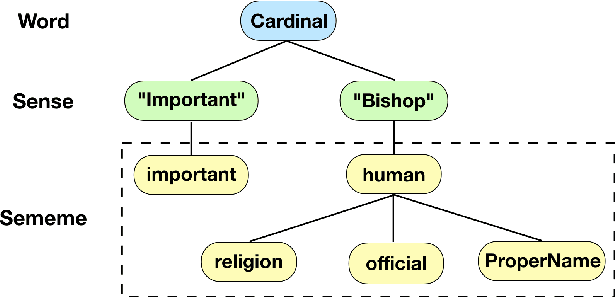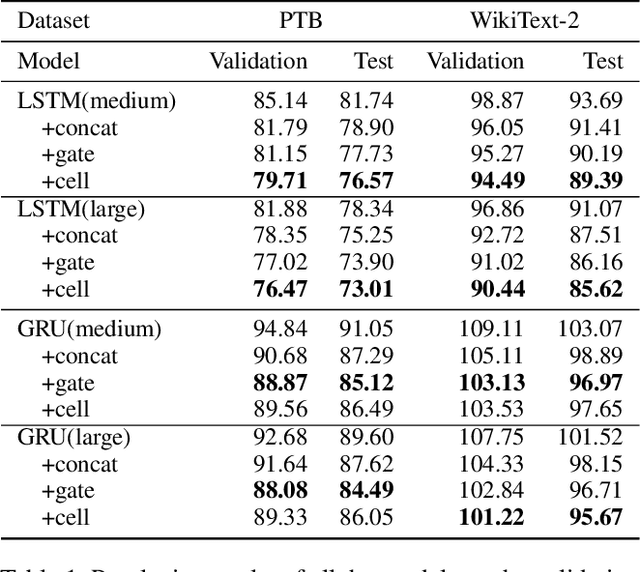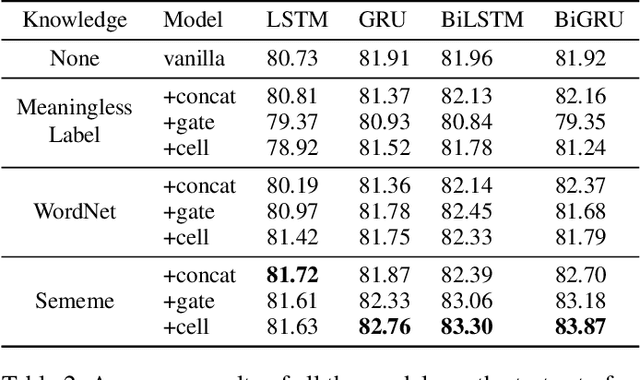Enhancing Recurrent Neural Networks with Sememes
Paper and Code
Oct 20, 2019



Sememes, the minimum semantic units of human languages, have been successfully utilized in various natural language processing applications. However, most existing studies exploit sememes in specific tasks and few efforts are made to utilize sememes more fundamentally. In this paper, we propose to incorporate sememes into recurrent neural networks (RNNs) to improve their sequence modeling ability, which is beneficial to all kinds of downstream tasks. We design three different sememe incorporation methods and employ them in typical RNNs including LSTM, GRU and their bidirectional variants. For evaluation, we use several benchmark datasets involving PTB and WikiText-2 for language modeling, SNLI for natural language inference. Experimental results show evident and consistent improvement of our sememe-incorporated models compared with vanilla RNNs, which proves the effectiveness of our sememe incorporation methods. Moreover, we find the sememe-incorporated models have great robustness and outperform adversarial training in defending adversarial attack. All the code and data of this work will be made available to the public.
 Add to Chrome
Add to Chrome Add to Firefox
Add to Firefox Add to Edge
Add to Edge